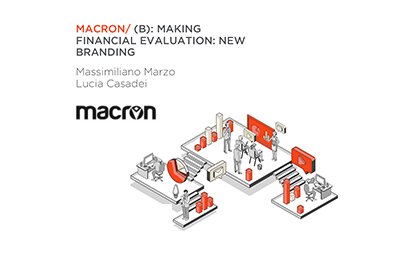Abstract
A new day was dawning. Marco Carniello, Group Brand Director Jewellery & Fa- shion at Italian Exhibition Group (IEG), had spent the whole night sitting on his sofa, thinking about the day when everything had changed. His mind went back to the 3rd of March 2020 when he was in a meeting with Michele Amenduni, Mat- teo Farsura and Davide Martini, Marketing Manager and the two Brand Managers of IEG, respectively. Marco was reporting how IEG, in just a few years, had become the Italian leader in the organisation of owned events and trade fairs. The latest edition of Vicen- zaOro, a jewellery fair of their own creation, had been the best that they ever organized and had established itself as the most highly regarded jewellery trade fair in Europe. The fair had closed only two months previously. As he was announcing these achievements, all of the mobiles in their pockets tril- led simultaneously, signalling receipt of a text: ‘Italy was in lockdown’. There was total silence in the room. Everybody looked at one another and shared the same thought: ‘What on earth do we do next? ‘Suddenly, shaken by a street noise, he was brought back to the present time, where stakeholders were waiting for an answer. He and his team had transformed a sectorial trade into a cultural hub for the entire jewellery sec- tor; they reinvented a trade fair as a boutique show focusing on the attractiveness of Italian beauty, design trends and innovation. They created a strong relation with industry associations, the municipality of Vi- cenza and citizens; VicenzaOro was an event for not only the jewellery industry, but also for Vicenza. All the stakeholders were waiting to know about the next edition of VicenzaOro.
Target for Teaching
- Decision Making under Uncertainty
- Physical and Digital Technology
Target audience and Issues
This case is intended for students enrolled in a strategic management course of an undergraduate and post-graduate program. In a core course of strategic manage- ment, this case can be used for a session on strategic decision-making under con- ditions of uncertainty. The case uncovers the key issues of decision-making under uncertainty, such as problems of gathering meaningful data, scenario planning, and the pressure on the decision exerted by stakeholder groups. In particular, it can be used to show how change at the operational level (e.g., the trade fair) requires stra- tegic considerations that align such change with established strategic goals, which might be subject to a temporary reprioritization. The case can also provide a rich learning experience to post-experience students (e.g., MBA and Executive programs). For instance, the case can be used as a coa- ching example for a discussion on the need to balance physical and digital technolo- gies in asset-based companies such as trade fair organizers, who have pavilions and core competences in building stands and set-ups that cannot simply be disbanded. This can direct a more general discussion on how to embed new technology in tra- ditional industries.
Teaching objectives
This case can be useful for multiple teaching and learning objectives:
- Learn about effective decision-making under conditions of uncertainty and how informed decisions require gathering data and constructing meaningful indicators.
- Learn about the importance of inclusion in stakeholder management, as tran- sparency and involvement can turn stakeholders’ pressure on decisional matters into an opportunity for strengthening relations and enhancing legitimization.
- Consider strategic issues: Disruptive events often require companies to adjust their operation, which should be done coherently with the deliberate strate- gy and might require a temporary reprioritization across established strategic objectives.
- Assess industry-specific conditions that might prevent the effectiveness of new technology adoption; learn how to embed new technology in the context of a traditional industries.



